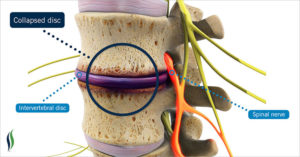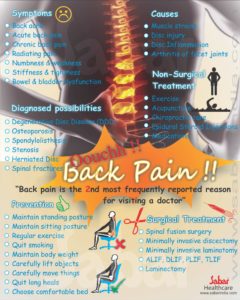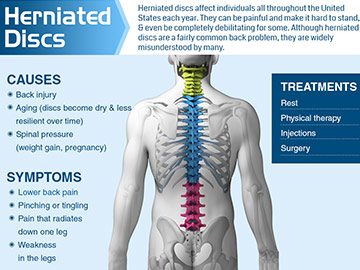This article contains affiliate links. If you make a purchase after clicking on a link I may earn a small commission at no extra cost to you.
Disc herniation is defined as a localized displacement of disc material beyond the limits of the intervertebral disc space. The disc material may e nucleus, cartilage, fragmented apophyseal bone, annular tissue or any combination of these parts.
The problem is that most patients aren’t willing to hold out that long due to the debilitating pain associated with the disc herniation.
A disc herniation can have associated low back pain or leg pain or both, which can extend below the knee. There is often a long-standing history of low back problems that subsequently resolved. There may be neurological symptoms such as thigh/leg/foot paraesthesia (pins and needles), numbness, burning or weakness.
Disc herniations seem to follow an order of aggravation that begins with pain, progresses to paraesthesia (pins and needles), and finally ends with numbness. 
Thus, someone who presents with foot numbness due to a disc herniation is in much worse condition than someone with leg pain due to a disc herniation.
Also, how far down the leg the symptoms present is an indicator of severity. If a disc patient’s leg numbness begins in the calf then a week later progresses to the foot, this indicates a worsening of the condition.
If, however, the reverse occurs and the patient’s numbness starts in the calf then regresses to the hamstring, this is seen as an indicator of improvement in the condition.
Many people didn’t even know they had a disc bulge!
A study examined the spines of 98 persons aged between 20 to 80 years who had no history of low back pain. MRI scans of their lumbar spines were carried out and later examined by experienced neuroradiologists.
Does a Herniated Disc always mean the person has back pain?
A recent studies show that with MRI and CAT Scan, many patients are found to have herniated discs and bulging discs, yet they have no back pain. In persons over forty, it was found that fifty per¬cent of them had bulging discs but no pain.
In another study thirty five percent of persons checked who were over forty had herniated discs yet no pain. Here the spinal canal was probably large enough to allow for the herniation or bulging so it did not press hard on the root nerve to cause any pain.
This tells us that not all disc anomalies picked up on MRIs cause low back pain.
The problem is that MRI results are so persuasive that many healthcare practitioners blame disc anomalies as the source of back pain simply due to their presence on a scan.











No comments yet.